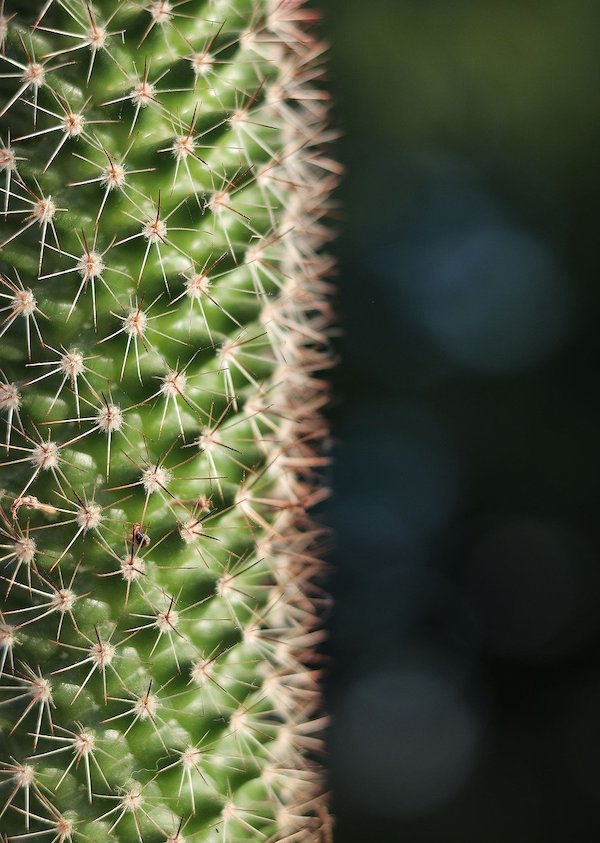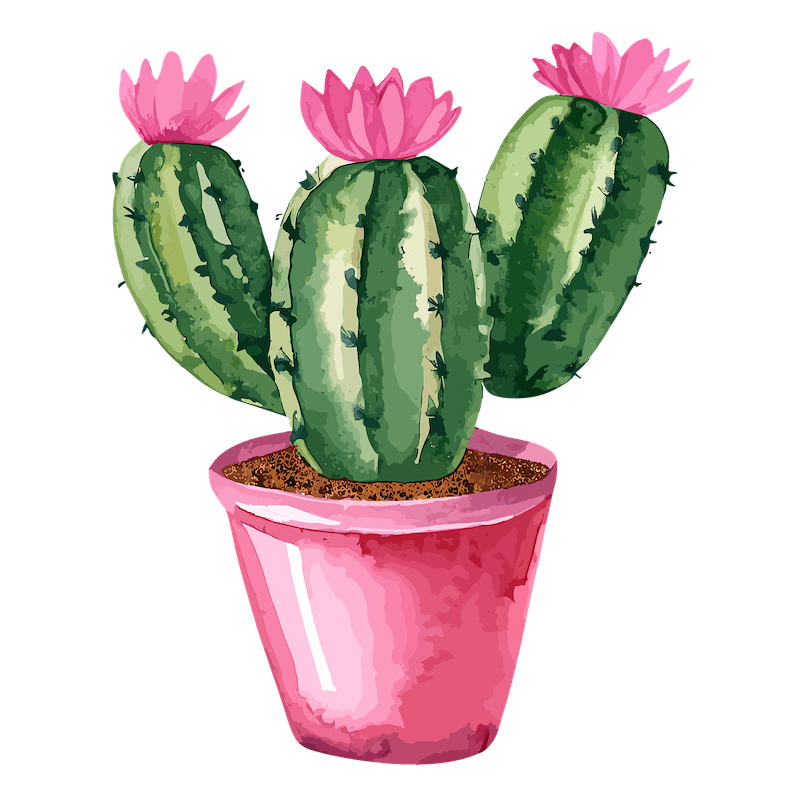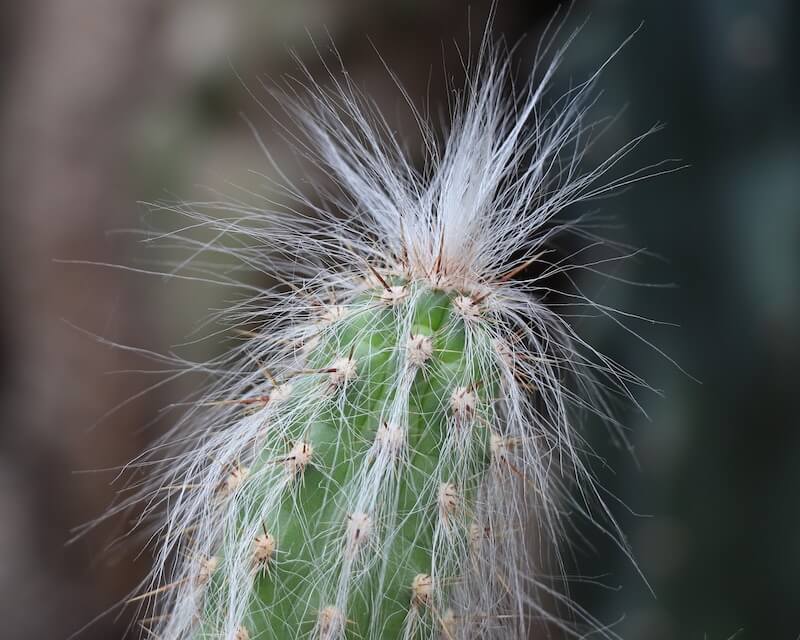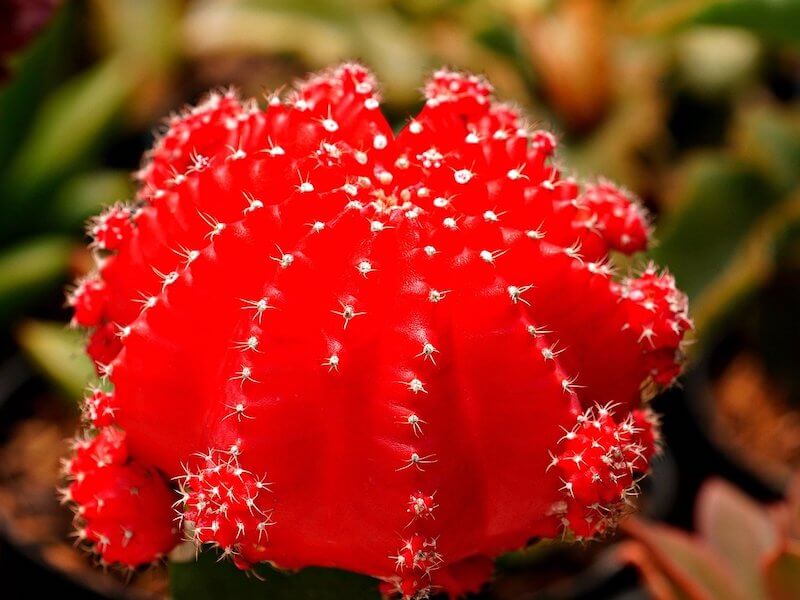If you have never kept a houseplant before, a cactus is a good one to start with. This is because cacti and other succulents tend to thrive on neglect, especially if you’re the sort of person who forgets to water plants. In fact, watering a cactus too often can be bad for it, so a bit of neglect will actually do your cactus some good. There are thousands of species to choose from as houseplants, with a style to suit every decorating taste: big ones, small ones, ones with lots of spikes, cacti with hardly any spikes (and succulents, of course, which have no spikes), and cacti that look soft and fluffy.
However, like anything else in your home, they can get dirty. The main way that cacti can get dirty is through things getting caught on the spikes. Spiders can often try using a cactus as a good place to spin a web, and these webs can look quite grotty. Dust, pollen, ash and other bits can coat cacti quite easily. Needless to say, a cactus that’s dusty and covered with old cobwebs looks downright sleazy. It’s much better to clean them than to leave them looking like this. Many cacti and succulents are also prone to scale insects and mites.
This is an article about how to clean a cactus specifically and isn’t about other aspects of cactus care, such as watering, temperature, sunlight, etc. These vary from cactus to cactus, and you should talk to someone at your local garden centre about this sort of thing or hunt online for more advice for your specific species of cactus or succulent.
Without getting too technical and giving the sort of description that requires a botany textbook to understand, for the purposes of this article, I’m going to divide cactuses into delicate cacti, the sort with widely spaced spikes, and the hairy sort. I’ve described each of these in the separate subsections. The instructions for cleaning the sort with widely spaced spikes and the delicate type hold true for succulents as well, except succulents aren’t likely to jab you with lots of nasty little needles.

Some Dos And Don’ts For Cleaning A Cactus
- DON’T use any cleaning chemicals or oils on your cactus. Remember, it is a living organism and substances that will kill bacteria will also kill living plant cells.
- DO be gentle.
- DO take the opportunity to check the health of your cactus – if you’re going to clean it, you may as well take the chance to re-pot it if necessary (and don’t forget to clean the pot) and maybe shift it to a better location.
- DON’T spray your cactus with water prior to cleaning it unless you know that they are due for a little water. Otherwise, you risk overwatering them.
- DO wear gloves to protect yourself from the spines. It’s not the sort with the large and very obvious spikes that you have to worry about (although these can draw blood if you’re not careful). Instead, it’s the ones with very fine spines that almost look soft and fluffy. Some species will leave you with a finger full of very small spines that hurt but are very fiddly to get out.
- DO take the chance to snip off any dead or decaying parts of the plant. This will help the disease (which is usually the guilty party) from spreading to other parts of the cactus and killing it.
Cleaning Delicate Cacti
Delicate cacti are the ones that are a bit fiddlier. Instead of looking like your typical cartoon cactus, these ones have lobed leaf-like things (the technical name is cladodes) that can break off easily. The Christmas Cactus (Schlumbergera truncata) is a good example of this type of cactus, along with the Pencil Cactus and some types of prickly pear. The trick with cleaning these types of cacti is avoiding breaking the stems, especially in the case of prickly pears if you were hoping to try ripening the “fruits”.
You should handle these delicate plants as little as possible to avoid damaging them. It may be best in the long run to put up with a little dust on the surface. However, if you can’t stand the dust, use your breath or a feather duster – the old-fashioned sort – to remove the dust. If you spot mites or scale insects, use a cotton bud or a very soft paintbrush to remove them.
After that, you should leave the cactus alone. However, feel free to clean the pot in whatever way you see fit.
Cleaning Cactuses With Widely Spaced Spikes

Cacti with widely spaced clusters or rows of spikes are the easiest type to clean, along with their close relatives, the spikeless succulents. Good examples of this type of cactus include the Fairy Castle Cactus, the Lifesaver Cactus and the African Milk Tree.
These types of cacti tend to get dusty, and they can also collect cobwebs on the spikes. To remove the dust, get a soft cloth and dampen the cloth very lightly (squeeze the cloth until you can’t get another drop out). Wipe this cloth over the stems of the cactus to remove the dust. In the case of cactus species with “ribs” that are hard to reach by simple wiping, one hack is to wrap the cloth around the tip of something like a pencil, a knitting needle or a chopstick (as long as it’s long enough and thin enough for your particular cactus). Now, you can reach into those grooves between the ribs and remove dust.
Use an old toothbrush or a paintbrush to remove cobwebs and other gunk from the spines. Your job should then be done. Resist the temptation to use leaf oil on the smooth parts of your cactus or succulent. It might look good for a little while, but a sick cactus doesn’t look good at all.
Cleaning A Hairy Cactus

A hairy cactus is a sort that has lots and lots of spikes, either long and jabby or the smaller sort that looks as if they ought to be soft and fluffy. Examples include the Bunny Ears Cactus (also known as the Angel Wing cactus – the quintessential cartoon cactus), the Golden Barrel Cactus, the Old Lady Cactus and the Rat Tail Cactus.
Obviously, simple wiping isn’t going to do the trick here! However, because of the way that the plant is structured, dust is unlikely to be a problem. In fact, on some types of cactus, dust won’t be seen. If you’re pretty good about cleaning your house (vacuuming, dusting, etc.), then you are unlikely to get dust on this type of cactus.
The main problem that you will have in terms of cleaning with this type of cactus is cobwebs and things like birch seeds getting caught in the spines. The trick is to avoid using your fingers (ouch!) Larger items, such as leaves, can be removed with tweezers. For smaller bits of fluff, birch seeds, spiderwebs, etc. then use a soft paintbrush or even an old toothbrush to sweep the debris away from the spines. If your cactus is larger, you may need to look for a larger or wider paintbrush to do the job. Just remember to be gentle, so you don’t hurt the plant.
If you spot mites or scale insects growing between the spines, then you will need to wipe these off. Use a cotton bud moistened in water to swab those little pests off. This process may knock a few spines free (hopefully not into your finger), but it’s better to sacrifice a few spines to save the whole plant.
And if you do get a spine from a cactus in your finger? Use tweezers. However, another very effective way is to apply a layer of white craft glue (PVA glue) to the skin and then let it dry. Once the glue has dried, you can peel the dried glue off your skin, and it should take the spines with it.

